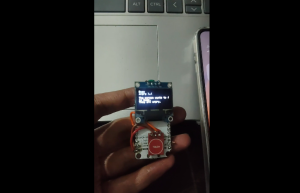Imagine a future where tankers and transports planes are not just support auxiliaries but actively participating in taking the enemy apart. A network will rope them in as data gatherers and data receivers, through connectivity that will keep them updated to avoid threats.
This will be what war will be like, it would not just strike craft attacking but also support craft that will launch standoff weapons and bombs. But, as they do it to be part of a connected battle network that can avoid getting into a range of deadly surface to air missiles (SAMS). It will be exactly what future war will be like that will affect operation in enemy territory, reported Breaking D.
It was discussed by the Air Mobility Command (AMC) lead officer, says Gen. Jacqueline Van Ovost who stressed that connectivity of all assets is the lynchpin.
In the virtual AFA 2020 conference, she informed reporters about plans in this particular Air Force initiative. She added that aircraft communications were limited by the use of line-of-sight radio networks, noting that radio is not enough in a future conflict when satellite clusters and beyond visual range (BVR) weapons have a good chance of hitting a tanker or transport from far away.
To offset this existing threat, the AMC will explore more advanced systems that include the ABMS battle network "on-ramps" and other Joint All-Domain Command & Control (JADC2) as options.
Most of the experiments to be done are the following that will explore the range of application of these new systems. One of these will be the use of a C-17 to drop a pallet simulating Joint Air-to-Surface Standoff Missile (JASSM) missiles, which includes a live test later.
Using the same C-17 platform, the crew will get targeting data updates that will be used to paint targets with a High Mobility Artillery Rocket System (HIMARS) inside the cargo area. During flight, data will be constantly updated until release when on a targeting run.
One more operation is C-130s and C-17s that are fed data by connected F-15s as they clear a safe corridor through air defenses. During the flight, the transports get real-time data updates while en route with special BVR equipment.
One other system due to be tested is the EdgeONE experiment that will act as communications and data relay in the air. It will be a backup if any links are disrupted to keep the data flow continuous, it is assumed there will be problems one a conflict begins.
Van Ovost said that the defenses of aircraft will be upgraded, but the information will be crucial in delivering these weapon systems. Getting the most accurate information on current threats and the best path to avoid them. Any change must be accounted for to keep one step ahead, for example, China or Russia.
Two things are situational awareness and beyond-line-of-sight capability that will be exploited maximally. This means spearheading in and out without getting hit or damaged by the enemy's weapon systems. She added that support craft will not always at point, but the information shared will be sent to the attacking strike fighters.
Getting real-time threat data for support craft will give them a hit or avoid option, especially if they have stand-off weapons.
Related article: U.S. Air Force Will Use Its Long Range Bombers on China
© 2025 HNGN, All rights reserved. Do not reproduce without permission.








